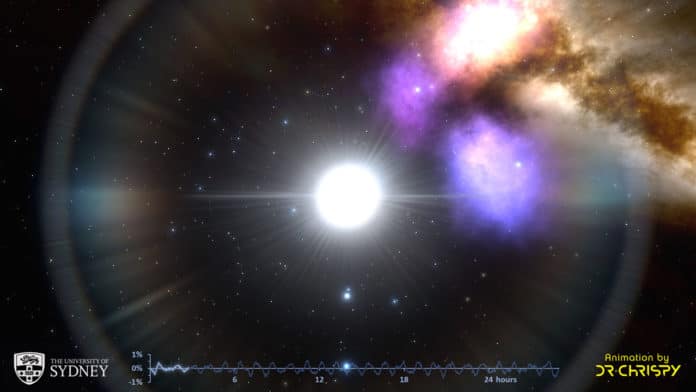By listening to the heartbeat of the stars, astronomers for the first time detected a rhythm of life for a class of stellar objects that puzzled scientists until now.
The study was done using data from NASA’s Transiting Exoplanet Survey Satellite (TESS). The data offered measurements on the brightness of thousands of stars that enabled scientists to discover 60 whose pulsations made sense.
The data also allowed scientists to cut through the noise.
The intermediate-sized stars being referred to—about 1.5 to 2.5 times mass of our Sun—are known as delta Scuti stars, named after a variable star in the group of stars Scutum. When considering the pulsations of this class of stars, space experts had recently recognized many pulsations; however, they had been not able to determine any specific patterns.
The Australian-led team of astronomers has reported the detection of remarkably regular high-frequency pulsation modes in 60 delta Scuti stars, ranging from 60 to 1400 light-years away.
Professor Tim Bedding from the University of Sydney said, “This definitive identification of pulsation modes opens up a new way by which we can determine the masses, ages, and internal structures of these stars.”
Daniel Hey, a Ph.D. student at the University of Sydney and co-author on the paper, designed the software that allowed the team to process the TESS data.
“We needed to process all 92,000 light curves, which measure a star’s brightness over time. From here, we had to cut through the noise, leaving us with the clear patterns of the 60 stars identified in the study,” he said.
“Using the open-source Python library, Lightkurve, we managed to process all of the light curve data on my university desktop computer in just a few days.”
Isabel Colman, a co-author and Ph.D. student at the University of Sydney, said: “I think it’s incredible that we can use techniques like this to look at the insides of stars.
“Some of the stars in our sample host planets, including beta Pictoris, just 60 light-years from Earth and which is visible to the naked eye from Australia. The more we know about stars, the more we learn about their potential effects on their planets.”
Professor Bedding said, “The identification of regular patterns in these intermediate-mass stars will expand the reach of asteroseismology to new frontiers. For example, it will allow us to determine the ages of young moving groups, clusters, and stellar streams.”
“Our results show that this class of stars is very young, and some tend to hang around in loose associations. They haven’t got the idea of ‘social distancing’ rules yet.”
Journal Reference:
- Timothy R. Bedding, Very regular high-frequency pulsation modes in young intermediate-mass stars. DOI: 10.1038/s41586-020-2226-8
